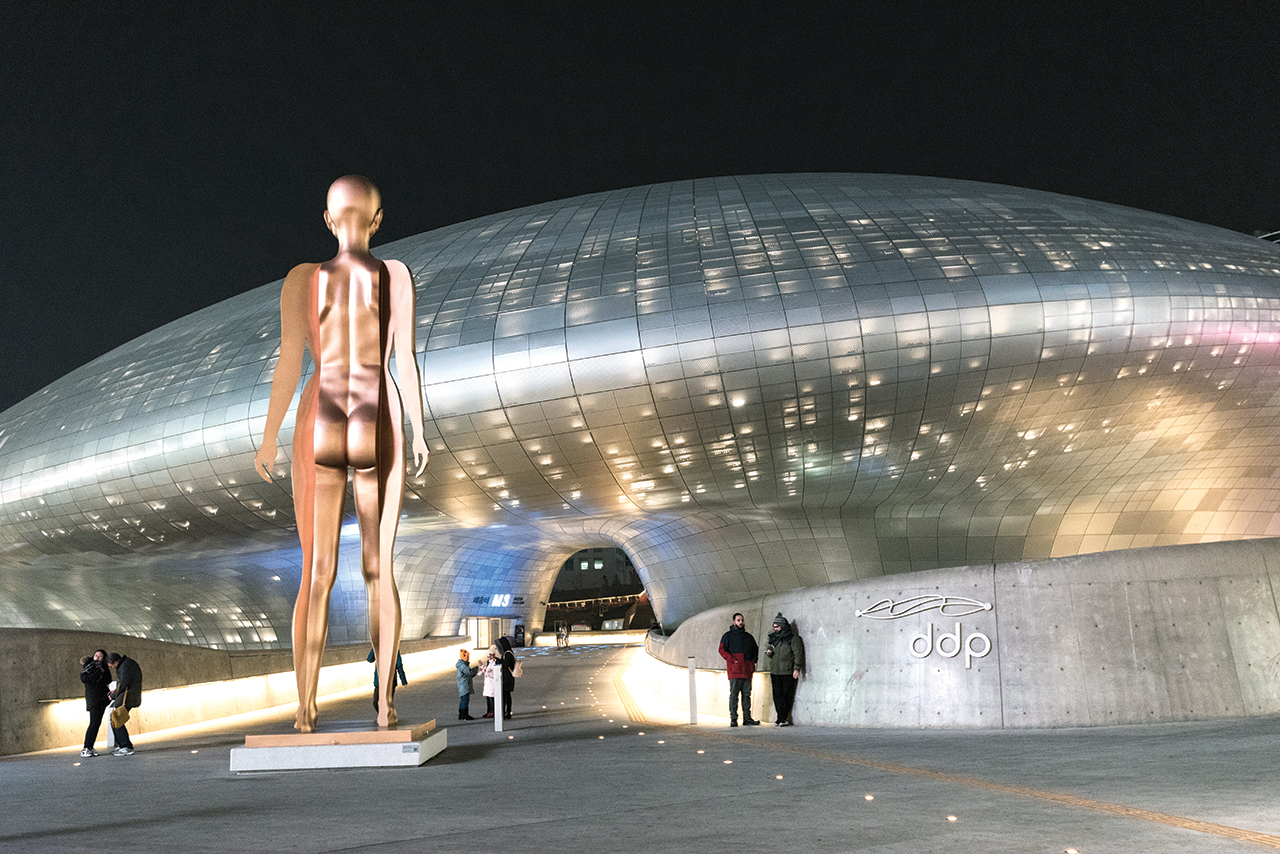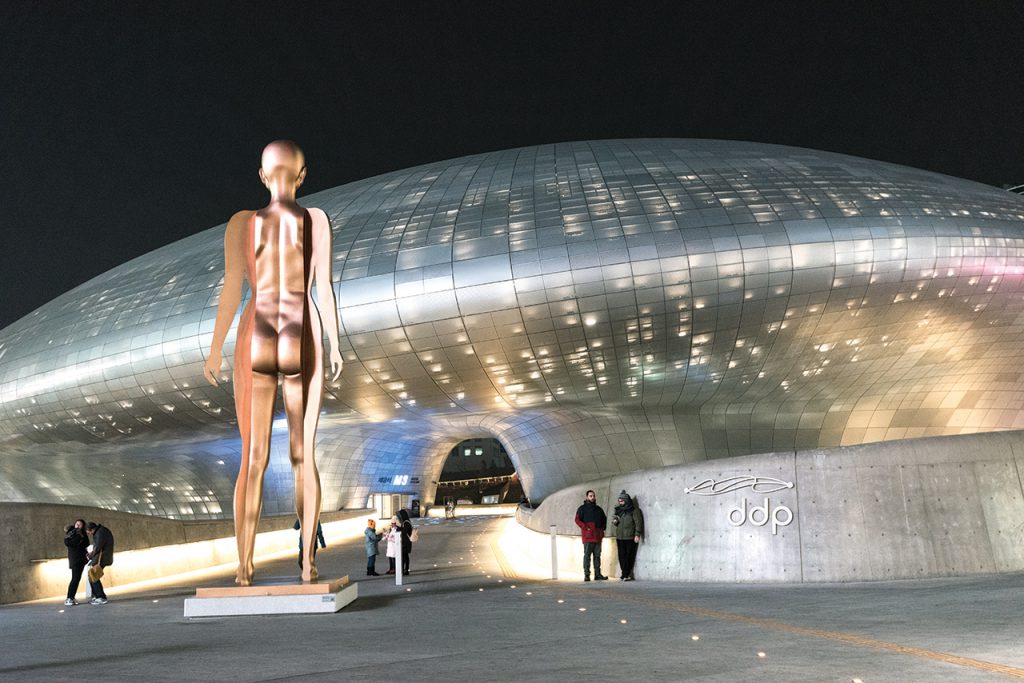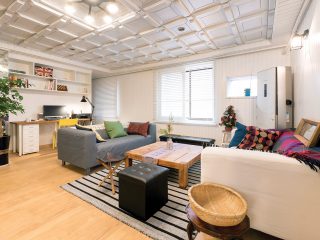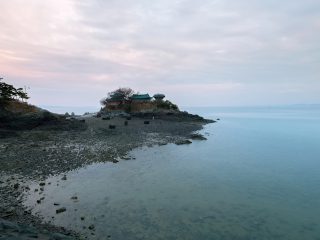The iconic DDP helps make Dongdaemun an international center of design and fashion
The Dongdaemun skyline has changed since 2014.
That was the year the Dongdaemun Design Plaza (DDP), designed by the late British architect Zaha Hadid, finally opened to the public. Likened by many observers to a spaceship that crash-landed in the middle of Seoul, the futuristic, eye-catching mass of twisting concrete and steel became one of Seoul’s most recognized icons and put the city on the international architecture map. It has also helped rejuvenate the surrounding Dongdaemun area, transforming it into a global center of fashion and design.
A controversial icon
In 2015, the New York Times included Seoul in its list of 52 places to go that year, in large part thanks to the DDP. “In 2014 the Dongdaemun Design Plaza alighted like a silver spaceship in a gritty old shopping neighborhood in the South Korean capital,” the paper wrote. “[T]he 900,000-square-foot, neo-futuristic, curvilinear exhibition space has helped transform the area around it into an international design hub.” The complex has hosted events and exhibits by major international brands and designers, including Dior, Chanel, Omega and Jean Paul Gautier. In 2014 and 2015, the building was one of the top 10 most popular locations on Facebook. It was the most popular location tag on Instagram in 2015, and the second most popular in 2016.
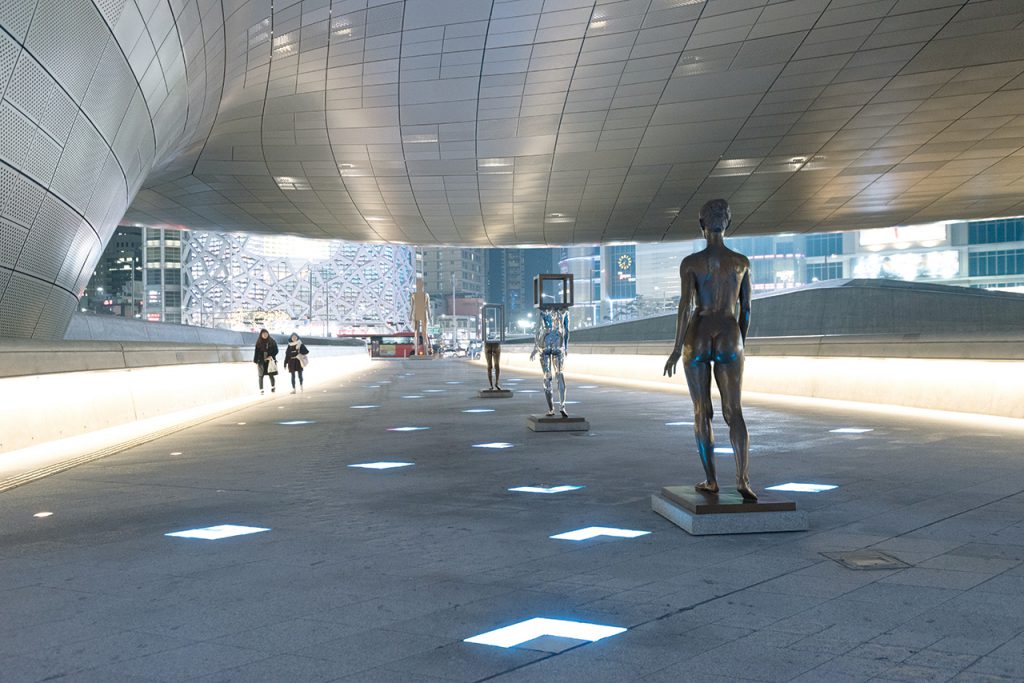
When the complex first opened in 2014, reviews were decidedly mixed. Architect Mihn Hyun-jun, the designer of the National Museum of Modern and Contemporary Art, Seoul, called it Zaha Hadid’s best work, praising its “perfect completeness.” Others were less kind. Mayor Park Won-soon, for instance, held it up as a paragon of bad urban planning. “When you look at the building and how it stands in its surroundings, which include several high-rise structures such as the Doota building, the word that comes to mind is ‘unbalanced,’” he said. “You look at the building from a certain angle, how the sloped roof influences the skyline, and you have to say that is an ugly sight.” Others pointed to the financial cost — nearly half a billion U.S. dollars — and the construction process, which included the demolition of a historic sports stadium. Writing in Korea Expose, photographer and writer Jun Michael Park lamented, “For many South Koreans including me, the DDP is a tangible reminder of South Korea’s ongoing identity crisis as a newly developed nation.”
Still, some 7 million tourists visit the Dongdaemun area a year, a statistic no doubt helped by the DDP, which is now one of the city’s most recognizable icons, regardless of what you think of its architectural merits. The complex has spurred the construction of new restaurants and hotels, most notably the landmark JW Marriott Dongdaemun Square Seoul. It has also changed the popular image of the Dongdaemun area. The Seoul Design Foundation’s Kim Min-hee says, “I think the biggest impact the DDP has had is transforming the public’s perception of Dongdaemun from that of an area crowded with old fashion wholesalers and retailers to that of a place where celebrities hang out and where you can enjoy global exhibits and events.”
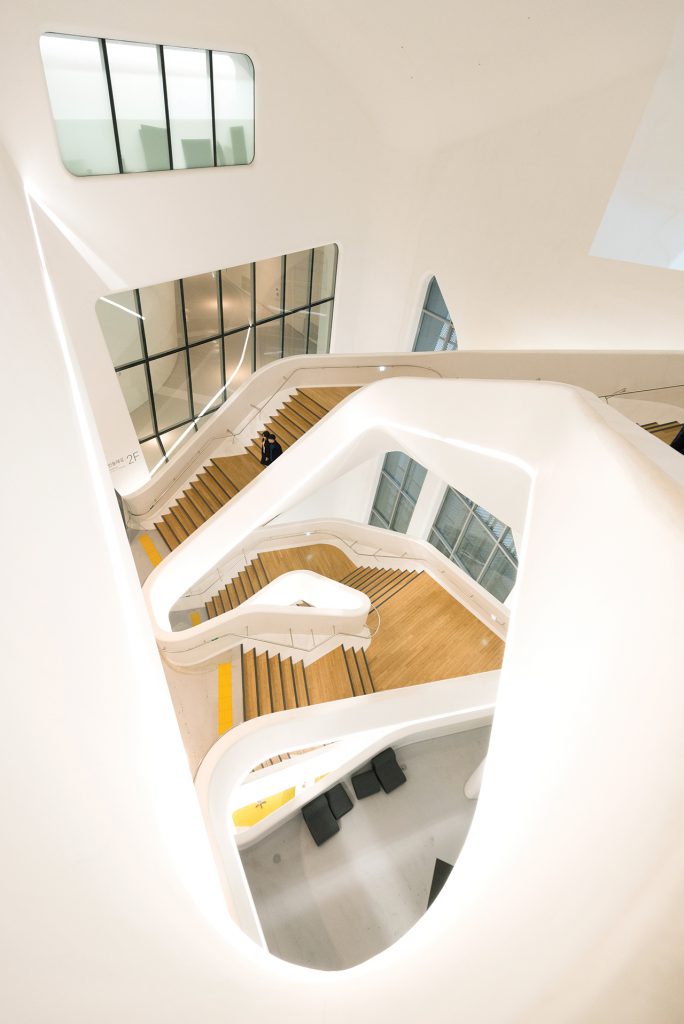
A big place
The DDP bills itself as the “world’s largest three-dimensional atypical structure,” an architectural term referring to buildings designed in a free-flowing shape. The building, which utilizes 5,800 tons of steel and is covered with 45,133 aluminum panels, is completely column free. Strolling inside it can be like walking in a spaceship or the gastrointestinal tract of a snake.
The DDP is a big place — about eight football pitches big, in fact. Don’t try to take it all in during one visit. “At first, people tried to take in a lot of things at once,” says Kim of the Seoul Design Foundation. “Now, more people are using the DDP as a place of relaxation, taking in the space itself, as intended by Zaha Hadid, who wished to present us with a hill on which to rest amidst the busy city.”
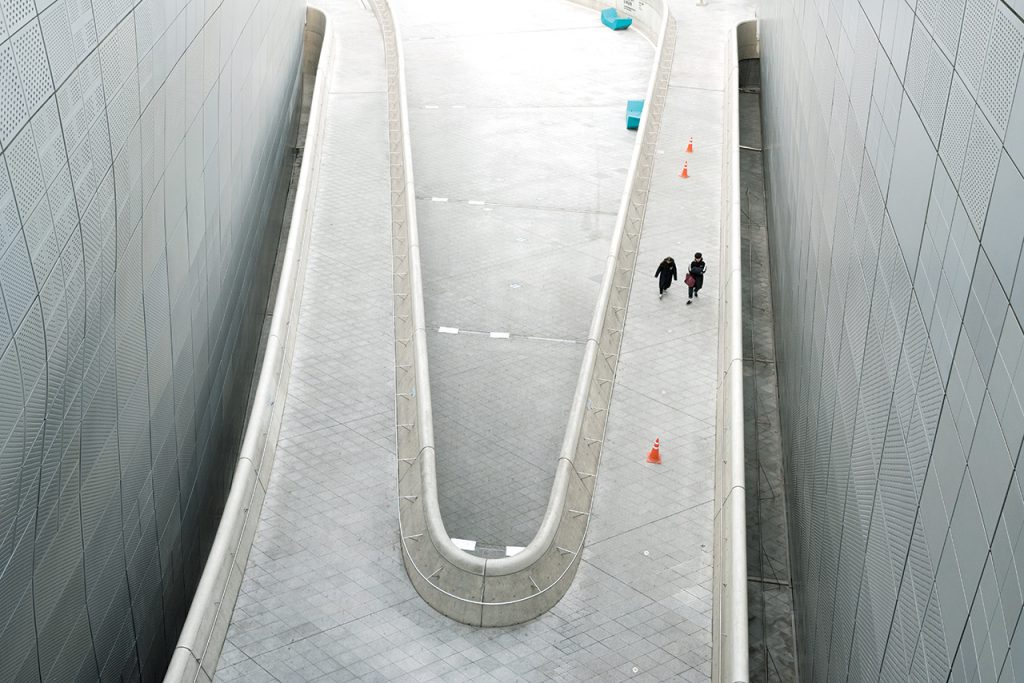
The complex consists of three parts: an Art Hall, a Museum and a Design Lab.
The Art Hall is where major events, such as Seoul Fashion Week, take place. The Museum, meanwhile, hosts special design-related exhibits, expositions and launching shows. It is currently hosting Look Smithsonian (thru Mar. 15), an exhibit of photographs from the Smithsonian’s collection. The Museum is also the temporary home of the Kansong Museum, one of Korea’s best collections of traditional art.
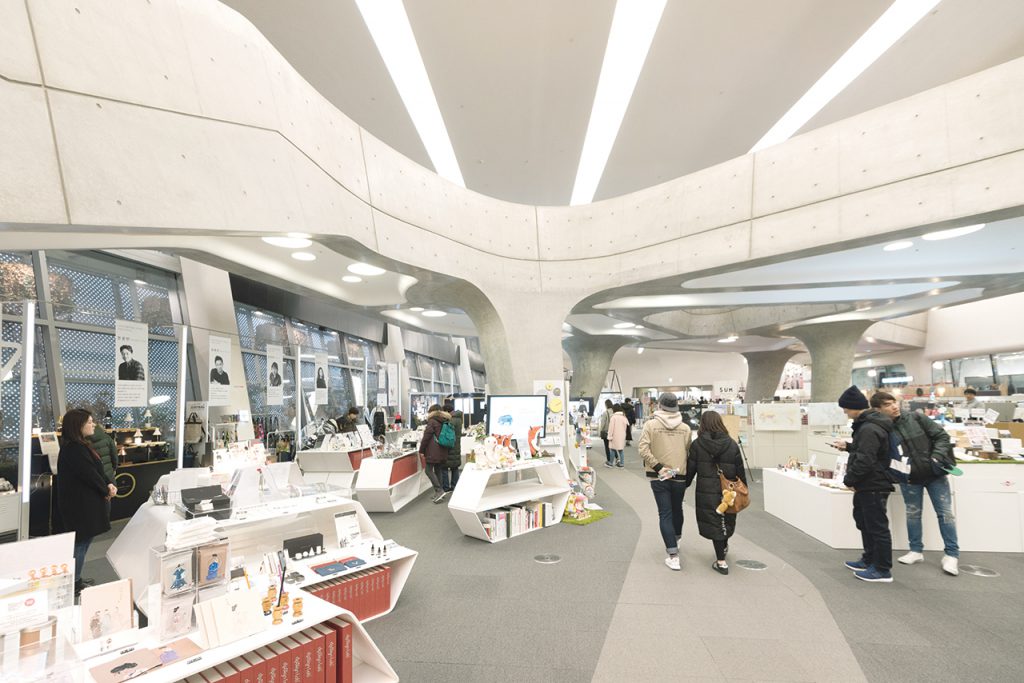
The Design Lab consists of a design and art shop where visitors will find a wide range of unique products and crafts. You may even get to meet some of the designers. One shop that has gotten international attention is IOYS, which uses cutting-edge 3D-scanning and 3D printing technology to produce individually crafted figurines of your pet, your child or even yourself.
If you’re at the DDP at night, be sure to check out the LED rose garden in the back of the complex.
Shopping and K-pop
“Sprawling” is the most appropriate word to describe Dongdaemun Market. Korea’s largest fashion market is a dense hive of high-rise retail malls, old-school shopping arcades, wholesale markets, gritty alleyways and LED light. Last year, the market was the Internet’s most popular Korean-tourism-related search word, according to the Korea Tourism Organization. On any given day or night, the market pulsates with throngs of visitors, both international and local.
Broadly speaking, Dongdaemun Market consists of two parts. The retail market looks like the set of “Blade Runner” with its souring LED-lit towers. Landmarks here include Doota, Migliore, hello apM and Lotte FITIN. These malls contain hundreds of stores, including many shops run by young designers. The malls also host music and dance shows on outdoor stages at night.
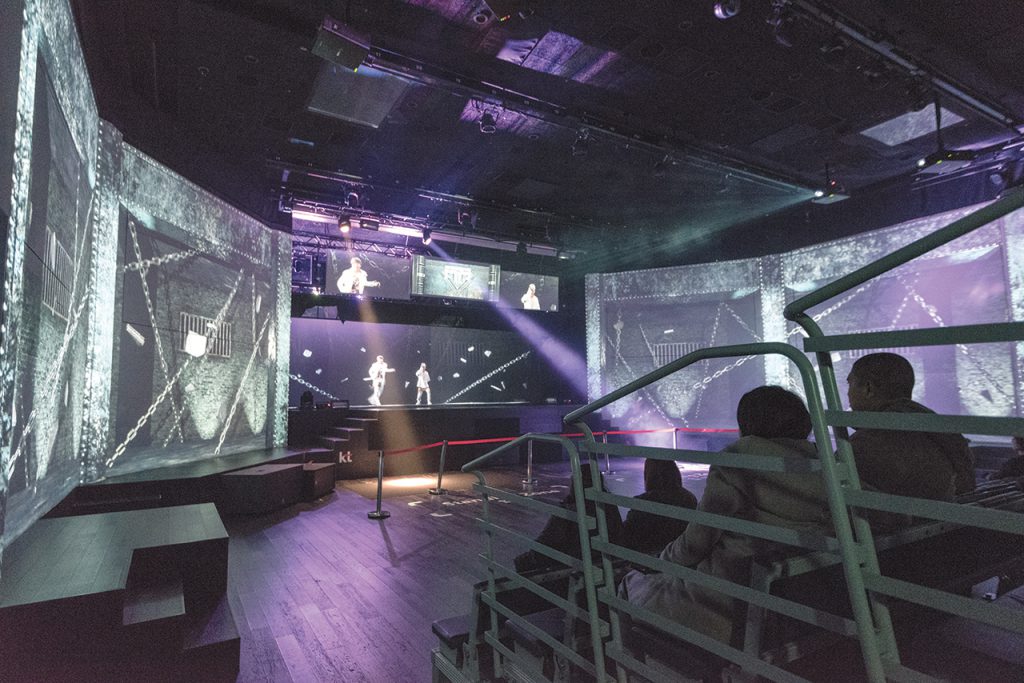
The wholesale market, meanwhile, is largely located behind the DDP. This is where you come if you’re buying in bulk. Compared to the retail market, the wholesale market has a decidedly vintage feel to it. Some parts, such as the Pyeonghwa Market, are historic sites in their own right. The wholesale market is also a night market — most of the shops don’t open until the evening and close the following morning.
One part of the Dongdaemun Market that is sometimes overlooked is the small collection of used book sellers near the Pyeonghwa Market. Consisting of hundreds of shops in its heyday, the Internet has left just a couple of dozen in business. Most of the books are Korean, but if you look around, you can find English-language books on offer, too.
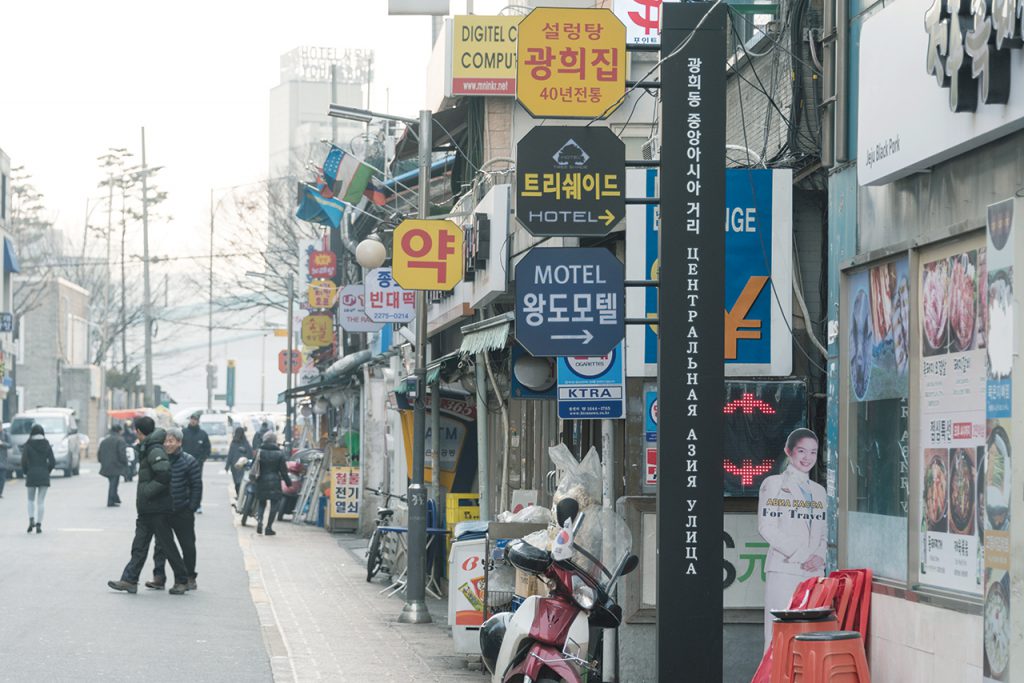
If you’re a K-pop fan, one spot you won’t want to miss is K-live, a holographic performance hall on the 9th floor of the Lotte FITIN mall. Run by KT, the hall hosts holographic performances by some of your favorite K-pop groups and offers visitors a range of hands-on experiences using augmented and virtual reality. Its terrace also offers a superb view of the Dongdaemun Design Plaza from above.
International flavors
Right next to Dongdaemun Market in neighboring Gwanghui-dong is Central Asia Street, a gritty collection of shops, restaurants and cafes largely run by and for Korea’s large community of expatriates from Mongolia, Uzbekistan and other Central Asian nations. The area developed in the early 1990s, when traders from Central Asia set up shop in the area to take advantage of its proximity to Dongdaemun Market. They were later joined by migrant workers and returning ethnic Koreans from the former Soviet Union.
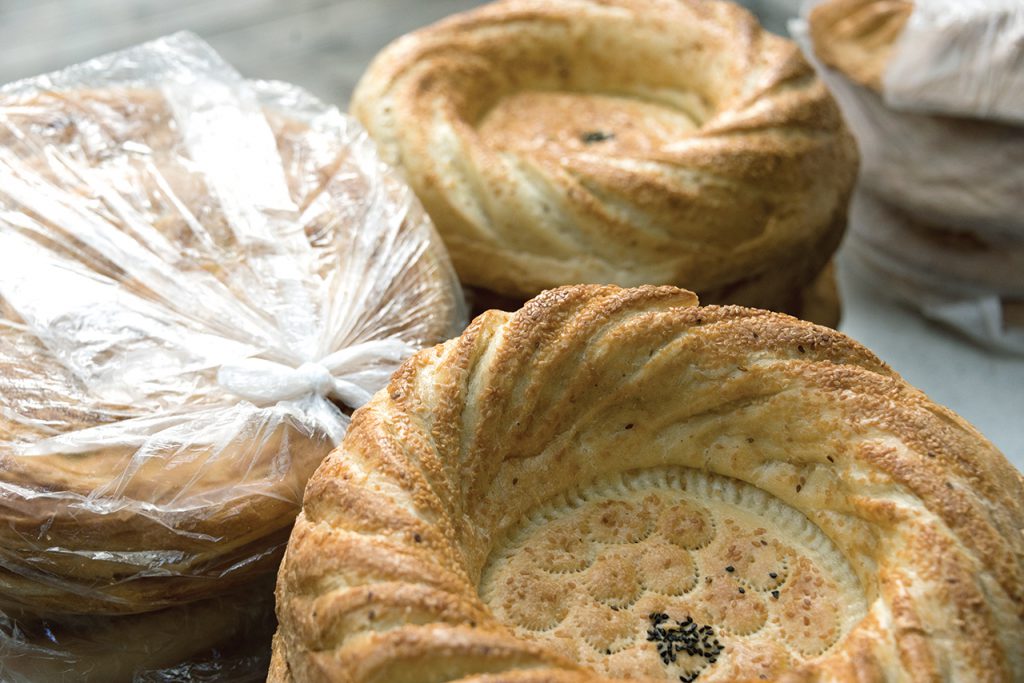
You’ll know you’re on Central Asia Street when you start seeing all the Cyrillic signs. The neighborhood’s main draw for non-Central Asians are the restaurants and cafes, where the food is good and the prices blissfully reasonable. A foodie favorite is Samarkand, an Uzbek eatery hidden in one of the neighborhood’s alleyways. For dessert, try Medovic, where the Russian honey cake is to die for. If you’re in the mood for Mongolian, check out the restaurant Ulaanbaatar, on the second floor of the so-called Mongol Town building.
At the Central Asian joints like Samarkand, popular dishes include shashlik (kebabs), borscht, manti (Central Asian dumplings, usually filled with lamb), plov (rice, carrots and meat) and Russian-style cabbage rolls, or golubsy. At Mongolian joints, try the buuz (steamed dumpling filled with lamb), khuushuur (fried dumplings filled with lamb), tsuivan (noodles with vegetables and — sit for it — lamb) and the suutei tsai, a salty milk tea. Obviously, knowing Russian or Mongolian goes a long way in these places, but most have staff on hand who can speak at least some Korean or English.
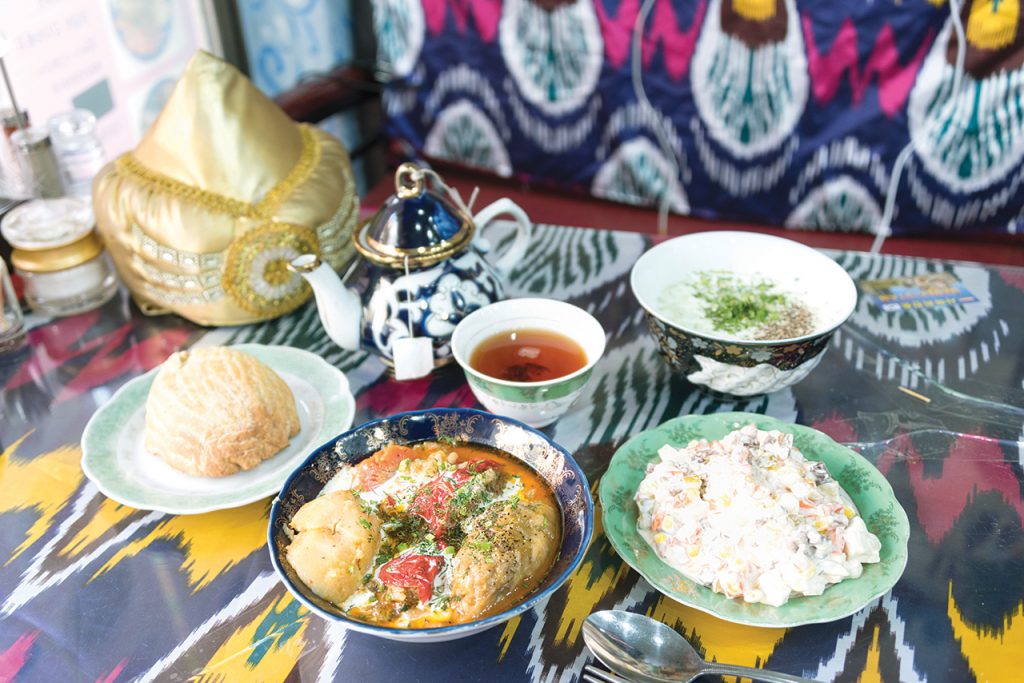
Exhibits at the DDP
The Encounter between Kansong and Paik Nam June
Thru February 5
Sculpture Exhibition of Kim Young Won
Thru February 26
LOOK Smithsonian Photo Exhibition
Thru March 15
Fornasetti Practical Madness
Thru March 19
The Griffin Bar on the top floor of the JW Marriott Dongdaemun Square Seoul offers inspiring views of the historic Dongdaemun Gate, the old Seoul Fortress Wall, Dongdaemun Market and the DDP. It also offers some very unique signature cocktails using Korean traditional liquors. It’s not cheap, but most certainly worth it.
Written and photographed by Robert Koehler

